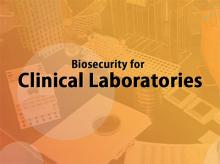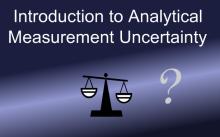Laboratories
Fundamentals of Personal Protective Equipment (PPE) in Clinical Laboratories |
Safety is imperative when working with potentially harmful materials and other hazards in the laboratory. This course is designed to assist clinical and public health laboratory professionals with applying risk management strategies to identify hazards, assess risks, and select appropriate personal protective equipment (PPE) options. ObjectivesAt the conclusion of this course, participants will be able to:
|
Fundamentals of Chemical Fume Hood Safety |
A chemical fume hood is the main piece of laboratory equipment that protects laboratory staff working with hazardous chemicals. When properly used, fume hoods protect staff from inhaling chemical gases, vapors, and aerosols. They serve as a physical barrier between staff and the hazardous materials inside the hood, and provide some splash protection. This basic-level eLearning course provides an essential understanding of the major components of a... More About This Course |
Fundamentals of Centrifuge Safety |
Centrifuges are instruments used to separate mixtures, based on particle size and density, by spinning the mixtures at high speeds. These instruments are essential tools in all types of laboratories. Serious injuries or potential exposures can occur if centrifuges are improperly used or maintained. This basic-level eLearning course provides information on the safe use of centrifuges. Topics covered include major parts of a centrifuge, types of... More About This Course |
Ethics and Data Integrity for Technical Staff |
This online course discusses ethics and personal integrity and illustrates how these traits apply to technical staff in a public health or other laboratory. Examples of general workplace ethics are provided. Many of the ways that data integrity can be affected by technical staff are explained, from recognizing when sample integrity has been compromised to documenting errors, handling calibration and quality control issues, and changing or correcting results. Examples are given to show how... More About This Course |
Biosecurity for Clinical Laboratories |
There are several sections in this course:
This course includes several interactions designed to underscore concepts discussed in the course, two downloadable risk assessment templates and laboratory guidance from APHL on specimen storage... More About This Course |
Introduction to Resource Management for Public Health Laboratories |
Public health laboratories must ensure a sufficient flow of funds to attract and keep top-notch staff, as well as to obtain and maintain required facilities and equipment. Furthermore, like shareholders of a corporation, the stakeholders in a laboratory--funding organizations, state government, taxpayers, and so on---demand a demonstration of the value they get for the money they spend. Herein lies the real challenge for the laboratory manager: How can you create and maintain an environment... More About This Course |
Introduction to Budgeting for Public Health Laboratories |
Budgeting and fiscal management are challenges to all laboratory supervisors, both new and not so new. Gone are the days when the laboratory received a significant amount of its funding from a single source. Today, government laboratories have numerous funding streams, including appropriated state or local revenue, direct federal funding, indirect federal funding (through other departmental grant recipients), fees or other earned income and third party reimbursement such as Medicaid. The... More About This Course |
Organizing Your Lab with Lean 6 Sigma Principles |
Course SummaryThis online course explains the use of Lean 6S principles in organizing the physical workplace for efficiency. The course shows how to eliminate the four types of waste: mistakes & reworks, excess inventory, unnecessary transporting and unnecessary motion. To accomplish this, the six sequential steps of Lean 6S are explained in detail and illustrated with photographs as well as graphics. Examples of Lean 6S initiatives at the State Hygienic Laboratory in Iowa... More About This Course |
Introduction to Analytical Measurement Uncertainty |
Course SummaryThis online course introduces the topic of measurement uncertainty and defines the basic terms of measurement. The reason that all measurements contain some level of doubt is explained and illustrated. A distinction is made between random and systematic error and examples are given. The importance of understanding measurement uncertainty in a laboratory setting is stated and examples are provided of situations in which the laboratorian will need this knowledge. The... More About This Course |
Ethics and Data Integrity for Non-Technical Staff |
Course SummaryThis online course introduces the concepts of ethics and integrity, defines the difference between the two and illustrates how these traits apply to non-technical staff in a public health laboratory. Examples of general workplace ethics are used throughout the course, from arriving on time to using the Internet for non-work activities. the term, "data integrity" is introduced and its relationship to fraud is given, including Information Technology and Public... More About This Course |

